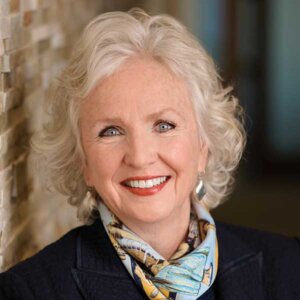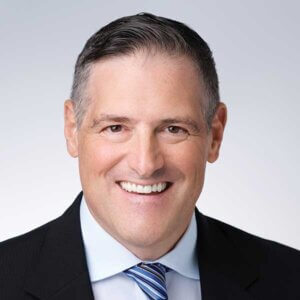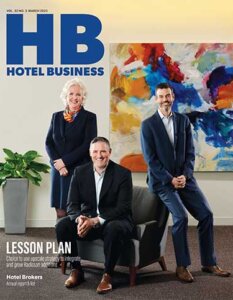With its acquisition of Radisson Hotels Americas—the largest in the company’s history—last August, Choice Hotels International added nine brands to its portfolio, including Radisson, Radisson BLU, Radisson RED and Radisson Individuals in the upscale space in the U.S.
These brands join Choice’s other upscale brands—Cambria and Ascend Hotel Collection—and company executives explained how they are integrating these new brands into their offerings—and their plan to grow them.
“What we want to do is position ourselves as the go-to challenger brands for upscale,” said Raul Ramirez, chief strategy and international operations officer, Choice Hotels International. “We are offering opportunities for developers to join this segment that were not available before. At Choice, we are trying to make sure that we just don’t put brands out there to be brands for the public; we want to make sure that we overlap the brand strategy with the development strategy and the guest strategy. So, from that perspective, we are building products that work for franchisees, guests, developers and, of course, the company.”
He likens the integration to golf. “When the ball lies, it lies very different in different locations,” he said. “You need to make sure it gets to the same destination. This is a very similar story.”
The main goal with the integration is to accelerate brand growth. “We need to ensure that every acquisition we make is to grow the brand and for us to enable that brand growth,” said Ramirez. “We need to make sure that we unlock the value proposition of what I call the ‘Choice Universe.’”
That value proposition includes providing the new franchisees with access to the benefits of working with the company, including Choice University, its training program; ChoiceMAX, its revenue management system; Choice Advantage, its property management system; and Choice Privileges, its loyalty program.
In February, Choice enabled members from both companies’ programs to exchange and redeem points. Ramirez said the plan is to completely unify the program and start migrating all the newly acquired properties to the Choice ecosystems this summer.
“We are unifying them so that they are not ‘1+1=2,’” he said. “This is also forcing us to look at our loyalty program and build capabilities now with the diversification of our company that work for different segments. We have to create opportunities within the program that will allow us to unlock that value.”
The company is working to fit the Radisson brands into its legacy 22-brand offering.
“We need to make sure that we tighten the guardrails that exist within each brand, focus on the space where they work best and then make sure that they don’t overlap,” he said. “We are thinking not only from what the brand offers, but also based on the environment where we will operate.”
Each of the upscale brands in the new portfolio play in different spaces. Cambria is a select-service, new-construction brand that offers a “hyperlocal” experience for guests, according to Ramirez, who leads the integration of the brands. Ascend Hotel Collection is a soft brand that maintains each hotel’s individual identity and offers guests a unique guest experience. It is primarily a conversion brand.
“When you look at the Radisson brand, that’s a different segment,” he said. “That is business travel—so, it’s very different from the other two. It is a conversion brand right now, so the environment is going to be critical, and it is a full-service offering. It is a very different product.”
After the deal with Radisson, Ramirez said he heard from some that Choice was targeting upscale now. “That is not the reality,” he said. “The reality is that Choice has been upscale for a while. We closed the year with about 65 Cambria units. Where we are today with Radisson [brand], there are 62. We have more Cambrias than Radissons, and we have close to 183 Ascend properties.”
While the company was already playing in the upscale space, its franchisees “are excited about the scale that it brings to upscale and the volume that it brings to the company,” said Ramirez. “Of course, with this growth, the contribution of our revenues coming from the upscale segment to the entire company will continue to grow and accelerate that path.”
He said that the upscale, real estate and development teams at Choice, which include Janis Cannon, SVP, Cambria and Ascend; Scott Oaksmith, SVP, real estate and finance; and Mark Shalala, SVP, upscale development, will use the same strategy they used that led to the success of Cambria and Ascend Hotel Collection to integrate and build the Radisson upscale brands.
Cambria opened its first property in 2008 and after some “starts and stops” along the way, Cannon was brought on board in 2016 for the repositioning of the brand.
“I came to Choice specifically for the upscale opportunity,” she said. “Choice was growing, and we knew that the long-term strategy was that we needed to grow into upscale. We wanted to grow more into those revenue-intensive type of segments and knew that upscale was the opportunity.”
When the brand was first launched, Cambria was an all-suites product. “One of the first things we did was really dig into who the target consumer was for the brand,” said Cannon. “We got real clarity on the insights as to what their needs were, and that the needs they had weren’t being served by competitors in the marketplace. That was really a whitespace opportunity for us.”
Through the consumer research, Choice identified its definition of luxury, which had changed. “The definition of luxury had migrated more from product to time and experience,” said the SVP. “We began to define our Cambria brand standards and requirements around that new definition of modern luxury. This consumer wanted little guilt-free indulgences like a Bluetooth mirror so they could listen to their music in the morning or a local craft beer at the hotel. Those things became an opportunity and, ultimately, iconic for our brand and a real differentiator.”
A profitability review to see what was working and where the opportunities were led them to drop the suites, which were also part of the original Cambria name. “Since we had short-term stays at an all-suite product, we had a higher housekeeping cost,” said Cannon. “Maybe we didn’t need to be building an all-suite product because we weren’t getting that longer length of stay, and that’s not what the customer wants for this particular brand in this particular opportunity. There are other brands within the Choice portfolio that cater to that consumer.”
Those reviews led to the growth the brand has seen in the years since. “It allowed for a different operating model and cost to construct,” said Cannon. “We got very clear about our development strategy—where we were going to grow and what kind of markets.”
The company also decided to put its own capital into the development of the hotels. “We realized that in order to grow the brand and accelerate in the way that we wanted to, providing capital in the form of key money was going to allow us to be able to grow the brand in the right markets with the right sponsors, attracting the right type of investment,” she said.
One of the key differentiators for the success of Cambria was that deploying of the strength of Choice’s balance sheet, according to Ramirez. “When you are growing a brand, like we did with Cambria in 2017, it is very difficult to sell a model that looks good on paper,” he said. “Developers want to go and see it. The guest wants to understand it better. Leveraging our balance sheet to build those hotels and to partner with those companies and developers by putting our money where our mouth was was critical.”
Shalala said that Choice is making a “heavy” investment with the developer in more than 90% of Cambria projects—and building its own properties. “To date, Choice has committed $750 million of corporate balance sheet support to grow the Cambria brand specifically,” he said. “It’s a major commitment. Growing Cambria—and our upscale brands in general—remains the top growth objective for the organization.”
He said the company has committed half of those dollars already, adding, “Depending on the project and the overall capital structure, we’re investing anywhere from 5% to 30% of the required equity, which, if you talk to developers, is really significant.”
Choice has been developing the brand on its own in the “more expensive, higher barrier-to-entry markets, where a lot of developers are shying away from now, but very important markets where we need to be located as a brand to continue to grow,” added Shalala.
Though the team is developing the hotels themselves, that still fits in with the company’s asset-light model. “Towards completion, we will start looking for a buyer where we will sell the hotel, generally at our cost, in exchange for a long-term franchise agreement, allowing us to recycle that capital and pour it back into another project,” he said.
Choice did just that in October with the Cambria Hotel New Haven University Area, selling it for approximately $30 million and securing a 30-year franchise agreement with the buyer to continue to operate the hotel as a Cambria.
Choice has also been involved with helping with renovations on existing properties. “This is an environment where we have financing challenges with access to capital in some cases, especially where you are trying to do something new,” said Ramirez. “That is where we leverage our balance sheet. We can do that to reposition brands from a conversion to help with renewals and maintenance. It’s good if you continue to invest in a property and we do that together with our franchisees.”
This type of initiative, and the others undertaken, has been why the brand has grown from 20 locations in the U.S. when the reimagining began to 66 currently open, 21 under construction and 70 in the pipeline. The brand is also in eight of the top 10 markets in the U.S. and 38 of the top 50.
“Most would agree that we’ve been able to grow that brand at a pretty impressive trajectory,” said Shalala.
The strategy for the brand was—and continues to be— to grow in a hub-and-spoke fashion, where there is a central location and build out from there. For example, in Washington, DC, the brand has Cambria Hotel Washington D.C. Capitol Riverfront and Cambria Hotel Washington, D.C. Convention Center, and later added properties in Rockville, College Park, Hanover and Ocean City, MD.
“That was our strategy—to secure our visibility and our performance in these top markets, and then begin to build out into these more concentric circles, like into the ring roads and other areas,” said Cannon. “That has worked very well for us.”
As the brand was growing along these spokes, Cambria introduced a new hybrid prototype to better fit these properties and the markets they are in. “In these secondary markets, oftentimes the RevPAR is not quite as high as we see in the city centers of those markets,” said Cannon. “We knew what we needed to value engineer Cambria for those kinds of markets and make sure that we are retaining the integrity of the brand promise and the guest experience, but also being able to drive more owner profitability.”
What has caught on for developers of all Cambrias—and what Choice hopes to emulate with the Radisson luxury brands—is proof of performance. “We proved that Choice is a credible and valued player in the upscale segment,” said Cannon. “I think part of it initially was that since Choice has been so successful in the economy, midscale and upper-midscale space, there was a question mark for some of those developers about whether Choice could play in upscale.”
That proof of performance carried through the pandemic. “Outperforming not only the category but our local comp sets from an index perspective really proved that,” she said. “No longer were we asking to be in the consideration set. Things started to change where they were coming to us. You could really feel it. It became palpable.”
“Cambria has taught us a lot, not only in the upscale segment, but even across the company,” said Ramirez.
The most important thing that helped the upscale brands grow is the team behind it, according to Shalala. “The one thing that really stands out, which we are going to apply to the Radisson brands as well, is the team that we have in place on the upscale side,” he said. “They are really the catalyst for the growth. I’d love to take credit, but if there’s one thing that I am most proud of, it is building out what I think is the most talented and impressive development team in the industry.”
Ramirez said that the company is investing in all of the upscale brands for the “long game,” adding, “We sacrifice some of the short-term gains because we believe in these long-term relationships. Through careful moves, like acquisitions, investments and developments in technology, we have been able to change the way in which hotels compete and operate.”









